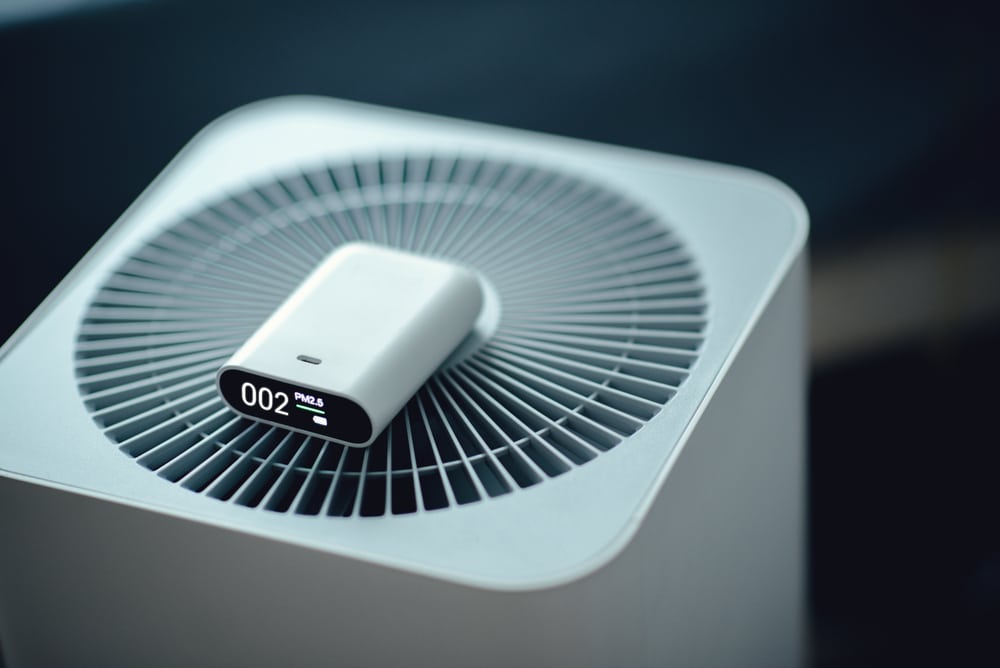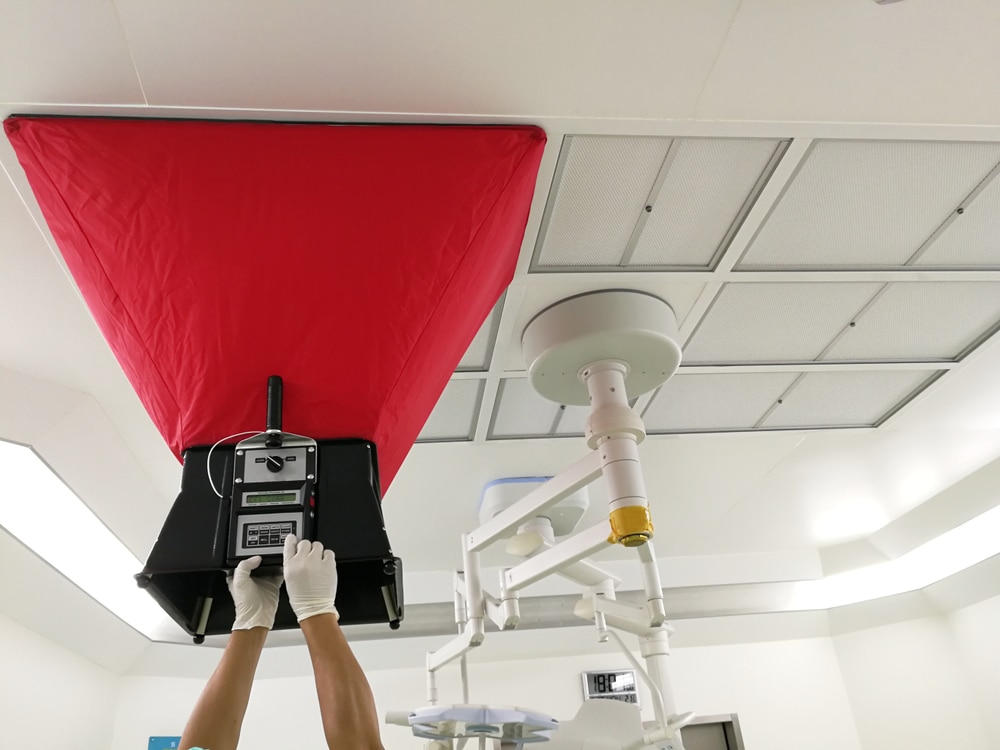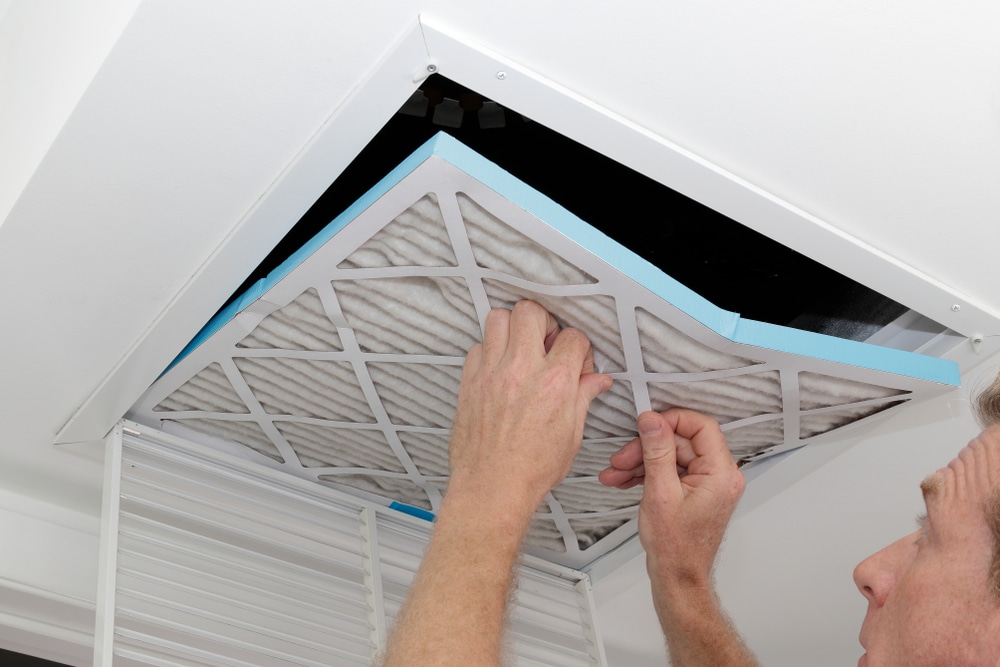Indoor air pollution is a growing concern for many individuals, especially those with asthma, allergies, or immune system disorders. With the majority of our time spent indoors, it is essential to understand the causes and impact of indoor air pollutants on lung health.
From pollutant sources to inadequate ventilation, this post will delve into the various factors that contribute to indoor air pollution. Additionally, we will identify the risks associated with exposure to these pollutants and provide practical solutions for improving indoor air quality.
If you or someone you know is struggling with respiratory issues, understanding the sources of indoor air pollution can help identify potential triggers of respiratory diseases and promote healthy living conditions. Join us as we explore the causes of indoor air pollution and discover how to improve your indoor air quality for a healthier life.
Introduction
Air quality is a crucial factor in maintaining respiratory health. We spend the majority of our time indoors, and the quality of the air we breathe in those spaces can have a significant impact on our respiratory health. Indoor air pollution can cause a variety of health problems, including respiratory issues, allergies, and other immune system disorders.
There is a direct connection between indoor air pollution and lung function. Poor indoor air quality can irritate the lungs and airways, leading to a decrease in lung function. This can cause shortness of breath, wheezing, and coughing, and make it harder to breathe. These effects may show up shortly after a single exposure or after repeated exposures to a pollutant.
Indoor air pollution can also cause a variety of health effects that may not be immediately apparent. These include irritation of the eyes, nose, and throat, headaches, dizziness, and fatigue. Whether a person reacts to a various indoor pollutant levels depends on their individual sensitivity. Some people may be more sensitive to certain pollutants than others and may experience more severe symptoms.
Common sources of indoor air pollution include tobacco smoke, mold, dust, pet dander, and volatile organic compounds (VOCs) from cleaning products, air fresheners, and building materials. These pollutants can build up over time and have a significant impact on indoor air quality. In addition, poor ventilation can also contribute to the indoor air quality problems and pollution. Without proper ventilation, pollutants can become trapped indoors.
To improve indoor air quality, it is important to identify and address potential sources of pollution. This can involve taking steps such as reducing or eliminating tobacco smoke, improving ventilation and cooling systems, and using air purifiers to remove pollutants from the air. Regular cleaning and maintenance can also help to prevent the buildup of dust and other pollutants.
Individuals with respiratory allergies, immune system disorders, or other health concerns should be particularly mindful of indoor air quality. Poor air quality can exacerbate these conditions and lead to more severe symptoms. By taking steps to improve indoor air quality, individuals can help to reduce their risk of respiratory issues and other health problems.
In addition to addressing potential sources of pollution, there are also steps that individuals can take to promote healthier air. One often overlooked factor is humidity levels. High humidity levels can promote the growth of mold and other pollutants, while low humidity levels can cause dryness and irritation in the airways.
Another important factor in environmental health is the use of air filters. Air filters can help to remove pollutants from the air. There are a variety of air filters available, ranging from basic models to more advanced options that use a wide variety of strategies to remove a wide range of pollutants.
Overall, clean air is a critical factor in maintaining respiratory health. By taking steps to identify and address potential sources of pollution, individuals can improve their indoor air quality and reduce their risk of respiratory issues and other health problems.
Indoor Air Pollution and Health
Indoor air pollution is a growing concern in today’s world, where individuals spend a significant amount of their time indoors. The quality of the air within our homes, workplaces, and other enclosed spaces can have a substantial impact on our health, particularly on our respiratory and immune systems. This section of the blog post aims to explain what indoor air pollution is, its impact on lung function, aggravation of cardiovascular disease, development, and exacerbation of lung issues, long-term effects of exposure, and effects on the immune system.
What is Indoor Air Pollution?
Indoor air pollution refers to the presence of various contaminants within enclosed spaces that can adversely affect human health. These pollutants may include biological agents (such as mold, pollen, pet dander, and dust mites), chemicals (such as volatile organic compounds, radon, and tobacco smoke), and particulate matter (such as dust, soot, and smoke). Indoor air pollution can result from various sources, including building materials, furnishings, cleaning products, combustion appliances, and outdoor air infiltration. Poor ventilation, high humidity levels, and heating systems and inadequate air filtration can exacerbate indoor air pollution.
Impact on Lung Function
Exposure to indoor air pollutants can have significant effects on lung function. Breathing in polluted air can lead to inflammation and damage to the airways, which can subsequently impair lung function. Reduced lung function can make it difficult for individuals to take in enough oxygen, leading to shortness of breath, coughing, wheezing, and other respiratory symptoms. Prolonged exposure to indoor air pollutants can also increase the risk of developing chronic lung diseases, such as asthma and chronic obstructive pulmonary disease (COPD).
Aggravation, Development, and Exacerbation of Lung Issues
Indoor air pollution is associated with the aggravation, development, and exacerbation of various lung issues. Individuals with pre-existing lung conditions, such as asthma and COPD, may experience worsening symptoms when exposed to indoor air pollutants. For instance, exposure to allergens like pet dander, mold, and dust mites can trigger asthma attacks, while exposure to tobacco smoke can exacerbate COPD symptoms.
Moreover, indoor air pollution can contribute to the development of new lung issues in otherwise healthy individuals. Research has shown that exposure to certain indoor air pollutants, such as secondhand smoke, radon, and volatile organic compounds, can increase the risk of developing lung cancer. Additionally, studies have linked exposure to high levels of particulate matter with an increased risk of developing asthma in children.
Long-term Effects of Exposure
Long-term exposure to indoor air pollution can have a range of adverse health effects, particularly on the respiratory system. Chronic exposure to pollutants can lead to the development of respiratory conditions like asthma, COPD, and lung cancer. Additionally, long-term exposure to indoor air pollutants can lead to impaired lung development in children, which can have lifelong consequences on their respiratory health. Children exposed to high levels of indoor air pollution may also be at a higher risk of developing respiratory infections, such as pneumonia and bronchitis.
Effects on the Immune System
Indoor air pollution can also have negative effects on the immune system. Exposure to certain indoor pollutants, such as mold and allergens, can trigger an immune response, leading to inflammation and irritation of the respiratory system. Over time, this inflammation can contribute to the development of chronic respiratory conditions. Additionally, some indoor air pollutants, such as tobacco smoke and certain chemicals, can suppress the immune system, making it harder for the body to fight off infections.
Primary causes of indoor air problems
Indoor and outdoor air pollution problems can arise from various sources, including biological pollutants, chemical pollutants, combustion pollutants, and poor ventilation. In this section, we will focus on the primary causes of indoor air problems and how they affect air quality.
Biological Pollutants Biological pollutants refer to contaminants that are living or have been derived from living organisms. They can cause various health problems, such as allergies, infections, and respiratory issues. The following are some examples of biological pollutants:
Mold and mildew: Mold and mildew are fungi that grow in damp and humid conditions. They produce spores that can cause respiratory problems, such as asthma and allergies.
Bacteria and viruses: Bacteria and viruses can cause infections, such as the common cold, flu, and pneumonia. They can be transmitted through the air or by contact with contaminated surfaces.
Pet dander and dust mites: Pet dander and dust mites are common allergens that can trigger respiratory problems, such as asthma and allergic rhinitis.

Chemical Pollutants Chemical pollutants are substances that are released into the air by various sources, such as cleaning products, pesticides, and building materials. They can cause various health problems, such as headaches, dizziness, and respiratory issues. The following are some examples of chemical pollutants:
Volatile organic compounds (VOCs): VOCs are chemicals that are released into the air by various sources, such as paints, solvents, and cleaning products. They can cause various health problems, such as headaches, dizziness, and respiratory issues.
Tobacco smoke: Tobacco smoke contains various harmful chemicals, such as carbon monoxide, formaldehyde, and benzene. Exposure to tobacco smoke can cause various health problems, such as lung cancer, heart disease, and respiratory issues.
Asbestos: Asbestos is a mineral that was commonly used in building materials, such as insulation and floor tiles. Exposure to asbestos can cause various health problems, such as lung cancer and mesothelioma.
Combustion Pollutants Combustion pollutants are substances that are released into the air by burning fuels, such as wood, oil, and gas. They can cause various health problems, such as carbon monoxide poisoning and respiratory issues. The following are some examples of combustion pollutants:
Carbon monoxide (CO): Carbon monoxide is a colorless and odorless gas that is produced by burning fuels. Exposure to carbon monoxide can cause various health problems, such as headaches, dizziness, and nausea. In severe cases, it can lead to death.
Nitrogen dioxide (NO2): Nitrogen dioxide is a gas that is produced by burning fuels. Exposure to nitrogen dioxide can cause various health problems, such as respiratory issues, such as asthma and bronchitis.
Particulate matter (PM): Particulate matter is a mixture of tiny particles and droplets that are released into the air by various sources, such as burning fuels and smoking. Exposure to particulate matter can cause various health problems, such as respiratory issues, such as asthma and bronchitis, and heart disease.
Other Sources of Indoor Air Problems Apart from biological, chemical, and combustion pollutants, there are other sources of indoor air problems that can affect indoor air quality. The following are some examples of other sources of indoor air problems:
Poor ventilation: Poor ventilation can lead to the buildup of pollutants in indoor air. It can also cause high humidity levels, which can promote the growth of mold and mildew.
High humidity levels: High humidity levels can promote the growth of mold and mildew, which can cause various health problems, such as respiratory issues and allergies.
Building materials and furnishings: Building materials and furnishings can release pollutants into indoor air, such as formaldehyde and other volatile organic compounds. New furniture, carpets, and curtains can also release chemicals into indoor air, which can cause various health problems, such as headaches and respiratory issues.
Identifying problems in indoor environments
Increased vigilance is only part of the solution, air quality should be objectively measured with a focus on specific common air pollutants. In this section we will cover assessing the signs and symptoms of poor air, measuring indoor air pollutants, and professional air quality testing. We will also address specific indoor air pollutants, including biological, chemical, and combustion pollutants.
Assessing Indoor Air Quality
Signs and symptoms
Identifying poor air quality is essential to mitigating its effects on health and well-being. Some common signs and symptoms of poor air quality include:
Persistent headaches or dizziness
Fatigue or difficulty concentrating
Irritation of the eyes, nose, or throat
Allergic reactions or asthma attacks
Unpleasant odors or stuffiness in the air
If you or the occupants of a building are experiencing these symptoms, it could indicate poor quality air, and further investigation is warranted.
Measuring indoor air pollutants
There are various ways to measure indoor air pollutants, ranging from simple visual inspections to more sophisticated monitoring devices. Some common methods include:
Visual inspections: Check for visible signs of mold, water damage, or excessive dust accumulation.
Humidity monitoring: High humidity levels can contribute to the growth of mold and other biological pollutants. Monitor humidity levels using a hygrometer to ensure they remain within a healthy range (30-50%).
Air quality monitors: Portable air quality monitors can measure various indoor air pollutants, such as particulate matter (PM), volatile organic compounds (VOCs), and carbon monoxide (CO). These devices can provide real-time feedback on air quality and help identify problem areas.

Portable Air Quality Monitors
Portable air quality monitors are compact devices designed to measure and monitor air quality in real-time. They typically measure the concentration of various pollutants, such as particulate matter (PM2.5, PM10), volatile organic compounds (VOCs), and common gases like ozone (O3), nitrogen dioxide (NO2), sulfur dioxide (SO2), and carbon monoxide (CO). Here’s an overview of how they work, the various methods of testing, and selection criteria for buying a device:
How they work:
Sensors:
Portable air quality monitors use a combination of sensors to detect different pollutants. For example, electrochemical sensors are commonly used for detecting gases, while optical sensors (like laser scattering sensors) are employed for measuring particulate matter.
Data processing: The sensors generate electrical signals proportional to the concentration of pollutants. These signals are processed by an on-board microcontroller, which converts them into readable values, such as parts per million (ppm) or micrograms per cubic meter (µg/m³).
Display and connectivity: The monitor displays the air quality data on a built-in screen or transmits it wirelessly to a connected smartphone or tablet. Some devices may also offer cloud connectivity for data storage, analysis, and remote access.
Various methods of testing:
Electrochemical sensing: Measures changes in electrical potential caused by chemical reactions between the target gas and an electrode.
Optical sensing: Uses light scattering techniques to detect and measure the concentration of particulate matter in the air.
Photoionization detection (PID): Detects VOCs by ionizing them with ultraviolet (UV) light and measuring the resulting electrical current.
Metal oxide semiconductor (MOS): Detects gases by measuring the change in electrical resistance when gas molecules interact with a metal oxide surface.
Infrared (IR) absorption: Measures the absorption of infrared radiation by specific gas molecules to determine their concentration.
Selection criteria for buying a device:
Target pollutants: Ensure the device can measure the pollutants you are most concerned about, such as PM2.5, PM10, VOCs, or specific gases like CO, NO2, SO2, and O3.
Sensitivity and accuracy: Look for a monitor with high sensitivity and accuracy to ensure reliable measurements. Check the specifications for details on detection ranges, resolution, and accuracy levels.
Portability and battery life: Choose a device that is lightweight, compact, and has a long-lasting battery to ensure you can use it comfortably on the go.
Connectivity and data logging: Consider a device with wireless connectivity (e.g., Bluetooth, Wi-Fi) for easy data access and sharing. Data logging capabilities can be useful for tracking air quality trends over time.
User interface and display: Opt for a monitor with a clear, easy-to-read display that provides real-time readings and possibly color-coded air quality indicators.
Calibration and maintenance: Check if the device requires regular calibration or sensor replacement and consider the cost and ease of these procedures.
Price and warranty: Compare prices of different models and consider the warranty coverage offered by the manufacturer. Keep in mind that a higher price may indicate better quality, accuracy, and durability.
By considering these factors, you can choose a portable air quality monitor that best suits your needs and helps you maintain a healthy living environment.
Professional air quality testing
If you suspect poor quality air, or need a comprehensive assessment, consider hiring a professional indoor air quality testing service. These professionals will conduct a thorough inspection of the property, collect air samples, and analyze them in a laboratory to identify the presence and concentrations of specific pollutants. They can also provide recommendations for improving indoor air quality based on their findings.

Addressing Specific Indoor Air Pollutants
Biological pollutants: mold, bacteria, and dust mites
Biological pollutants can cause allergic reactions, respiratory issues, and other health problems. To address these pollutants, consider the following steps:
Regular cleaning: Clean surfaces, carpets, and upholstery regularly to reduce dust, mold spores, and allergens. Use a vacuum cleaner with a HEPA filter to capture fine particles effectively.
Controlling humidity: Maintain indoor humidity levels between 30-50% to discourage the growth of mold and dust mites. Use a dehumidifier in damp areas, such as basements, to reduce excess moisture.
Proper ventilation: Ensure adequate ventilation in high-moisture areas, such as bathrooms and kitchens, by using exhaust fans or opening windows.
Addressing water damage: Repair leaks and address water damage promptly to prevent mold growth.
Chemical pollutants: VOCs and tobacco smoke
Chemical pollutants, including volatile organic compounds (VOCs) and tobacco smoke, can cause irritation and long-term health issues. To reduce exposure to these pollutants, consider the following:
Source control: Choose low-VOC products, such as paints, adhesives, and cleaning products, and avoid smoking indoors.
Proper ventilation: Increase ventilation by opening windows or using exhaust fans to dilute indoor air pollutants.
Air purification: Use air purifiers with activated carbon filters to remove VOCs and other chemical pollutants from indoor air. Ensure that the air purifier is appropriately sized for the room in which it is placed.
Combustion pollutants: CO, NO2, and PM
Combustion pollutants, such as carbon monoxide (CO), nitrogen dioxide (NO2), and particulate matter (PM), can result from burning fuels, such as natural gas, oil, and wood. These pollutants can cause respiratory issues and other health problems. To minimize exposure to combustion pollutants, consider the following steps:
Proper appliance maintenance: Regularly inspect and maintain fuel-burning appliances, such as furnaces, water heaters, and stoves, to ensure they are functioning correctly and not producing excess pollutants.
Ventilation: Ensure proper ventilation for fuel-burning appliances, including sealed combustion appliances, to remove combustion byproducts from indoor spaces.Carbon monoxide detectors: Install CO detectors in areas near fuel-burning appliances and sleeping quarters to alert occupants in case of a CO leak.
Air filtration: Use air purifiers with HEPA filters to capture particulate matter and reduce indoor PM levels.
Improving indoor air quality
Indoor air quality is a critical aspect of creating a healthy home or workplace environment. Poor quality air can lead to a wide range of health issues, including respiratory problems, allergies, and other health conditions. Fortunately, there are many strategies and tools available to improve indoor air quality. This section provides an overview of some of the most effective methods.
Ventilation and Air Circulation
Proper ventilation is essential for improving indoor air quality. A well-ventilated space allows fresh air to circulate, which helps to remove pollutants and other harmful substances from the air. Additionally, good ventilation helps to regulate temperature and humidity levels, which can further improve air quality. Here are some strategies for improving ventilation:
Open windows and doors: This is the simplest and most effective way to improve ventilation. Opening windows and doors allows fresh air to circulate, which can help to remove pollutants and other harmful substances from the air.
Use exhaust fans: Exhaust fans can be used in bathrooms, kitchens, and other areas where moisture and odors tend to accumulate. These fans help to remove pollutants and moisture from the air.
Install mechanical ventilation systems: Mechanical ventilation systems, such as heat recovery ventilators (HRVs) and energy recovery ventilators (ERVs), are designed to provide continuous ventilation. These systems can be particularly useful in tight or well-insulated spaces, where natural ventilation may be limited.
Mechanical ventilation systems
Mechanical ventilation systems, such as heat recovery ventilators (HRVs) and energy recovery ventilators (ERVs), are vital components of modern building designs. They help maintain a healthy indoor air quality by continuously exchanging stale indoor air with fresh outdoor air while minimizing energy loss. In this comparison, we will examine the key features, advantages, and disadvantages of HRVs and ERVs to provide a non-biased overview of their functionalities.
Heat Recovery Ventilators (HRVs):
Functionality: HRVs are designed to transfer heat between the incoming fresh air and the outgoing stale air. During winter, heat from the warm indoor air is transferred to the cold incoming outdoor air, while in summer, heat from the incoming air is transferred to the cooler outgoing air. This process reduces the energy required to heat or cool the incoming air.
Advantages:
Energy Efficiency: HRVs can recover up to 80% of the heat energy from the outgoing air, reducing the need for additional heating or cooling.
Condensation Control: HRVs help reduce condensation levels in cold climates, minimizing the risk of mold and mildew growth.
Disadvantages:
Limited Humidity Control: HRVs do not effectively transfer moisture between the incoming and outgoing air, making them less suitable for humid climates or buildings with high indoor humidity levels.
Energy Recovery Ventilators (ERVs):
Functionality:
ERVs work similarly to HRVs in transferring heat between the incoming and outgoing air. However, ERVs also transfer moisture, helping to balance indoor humidity levels. This makes ERVs suitable for both temperature and humidity control.
Advantages:
Energy Efficiency: Like HRVs, ERVs can recover a significant amount of heat energy from the outgoing air.
Humidity Control: ERVs can transfer moisture between the incoming and outgoing air, making them suitable for buildings with high indoor humidity levels or in humid climates.
Indoor Air Quality: By transferring moisture, ERVs can help prevent mold and mildew growth in humid climates.
Disadvantages:
Complexity: ERVs are more complex than HRVs, making them potentially more expensive and requiring more maintenance.
Sensitivity to Pollutants: The moisture transfer process in ERVs can potentially introduce pollutants or allergens from the outdoor air into the indoor environment.
Both HRVs and ERVs offer energy-efficient solutions for maintaining indoor air quality. The choice between the two depends on the specific needs of the building and its occupants. HRVs are ideal for colder climates with lower indoor humidity levels, while ERVs are better suited for buildings in humid climates or with high indoor humidity levels. Ultimately, the selection should consider factors such as climate, indoor air quality requirements, and budget.
Air Filtration Systems
Air filtration systems can be effective in removing pollutants and other harmful substances from the air. There are many different types of air filtration systems available, including HEPA filters, activated carbon filters, and electrostatic filters. Here are some things to consider when choosing an air filtration system:
Size and capacity: Make sure to choose an air filtration system that is appropriately sized for the space. A system that is too small may not effectively remove pollutants, while a system that is too large may be inefficient and expensive to operate.
Filter type: Different types of filters are designed to remove different types of pollutants. For example, HEPA filters are effective in removing particles such as pollen, dust, and pet dander, while activated carbon filters are designed to remove odors and volatile organic compounds (VOCs).
Maintenance: Air filtration systems require regular maintenance to ensure they continue to operate effectively. Make sure to follow the manufacturer’s recommendations for filter replacement and cleaning.
Air Filtration Systems Selection
Air filtration systems are designed to remove particulate matter, allergens, and odors from the air to improve indoor air quality. Different types of filters, including HEPA filters, activated carbon filters, and electrostatic filters, serve specific purposes and offer unique advantages and disadvantages. When choosing an air filtration system, consider factors such as filtration efficiency, maintenance requirements, and specific needs of the environment.
HEPA (High-Efficiency Particulate Air) Filters:Pros:
a. High Filtration Efficiency: HEPA filters are highly efficient, capturing at least 99.97% of particles as small as 0.3 microns, making them ideal for removing allergens, dust, and other particulate matter. b. Widely Used and Tested: HEPA filters are commonly used in various settings, including hospitals, laboratories, and residential environments, making them a well-established and reliable choice.
Cons:
a. Limited to Particulate Matter: HEPA filters do not effectively remove gaseous pollutants, such as volatile organic compounds (VOCs) or odors. b. Maintenance: HEPA filters require regular replacement, which can be costly and time-consuming.Selection Criteria: Choose a HEPA filter if the primary concern is removing allergens, dust, and particulate matter from the air, and the environment does not have high levels of gaseous pollutants.
Activated Carbon Filters:Pros:
a. Effective at Removing Gaseous Pollutants: Activated carbon filters are excellent at adsorbing VOCs, odors, and other gaseous pollutants, which HEPA filters cannot effectively remove. b. Versatility: These filters can be combined with other filters (e.g., HEPA filters) in air purification systems to target both particulate and gaseous pollutants.
Cons:
Limited to Gaseous Pollutants: Activated carbon filters are not efficient at capturing particulate matter, such as dust and allergens.
Saturation: Over time, the activated carbon becomes saturated and loses its effectiveness, requiring regular replacement.
Selection Criteria: Choose an activated carbon filter if the primary concern is removing gaseous pollutants, such as VOCs and odors, and combine it with a HEPA filter for comprehensive air purification.
Electrostatic Filters:
Pros:
Energy Efficiency: Electrostatic filters use an electric charge to attract and capture particles, requiring less energy than traditional mechanical filters.
Reusable and Washable: Many electrostatic filters can be washed and reused, reducing waste and long-term costs.
Cons:
Lower Filtration Efficiency: Electrostatic filters generally have lower filtration efficiency than HEPA filters, making them less effective at removing smaller particles and allergens.
Ozone Generation: Some electrostatic filters produce ozone as a byproduct, which can irritate the respiratory system and contribute to indoor air pollution.
Selection Criteria:
Choose an electrostatic filter if energy efficiency and low maintenance costs are primary concerns, and the environment does not require the highest level of particle filtration or have ozone-sensitive occupants.
The choice of an air filtration system depends on the specific needs of the environment and the pollutants that need to be addressed. HEPA filters are ideal for removing particulate matter and allergens, activated carbon filters excel at removing gaseous pollutants, and electrostatic filters offer energy efficiency and low maintenance costs. A combination of filters may provide the most comprehensive air purification solution.
Controlling Humidity Levels
Humidity levels can have a significant impact on indoor air quality. High humidity levels can lead to mold and mildew growth, while low humidity levels can cause dry skin, respiratory problems, and other health issues. Here are some strategies for maintaining healthy humidity levels:
Optimal indoor humidity levels: The ideal indoor humidity level is between 30% and 50%. You can use a hygrometer to measure indoor humidity levels and adjust accordingly.
Strategies for maintaining healthy humidity levels: Some strategies for maintaining healthy humidity levels include using exhaust fans in bathrooms and kitchens, fixing any leaks or moisture problems, and using a dehumidifier or humidifier as needed.
Dehumidifiers and humidifiers: Dehumidifiers can be effective in removing excess moisture from the air, while humidifiers can add moisture to dry indoor air. Make sure to choose a dehumidifier or humidifier that is appropriately sized for the space.
Reducing Exposure to Indoor Air Pollutants
Reducing exposure to indoor air pollutants is another critical aspect of improving indoor air quality. Here are some strategies for reducing exposure:
Elimination of pollutant sources: Identify and eliminate sources of indoor air pollutants, such as tobacco smoke, cleaning products, and pesticides.
Use of low-VOC products and materials: Choose products and materials with low levels of volatile organic compounds (VOCs), which can be harmful to human health. Look for products with certifications such as GreenGuard or the Carpet and Rug Institute’s Green Label Plus.
Proper maintenance and cleaning practices: Regular cleaning can help to reduce indoor air pollutants. Use non-toxic cleaning products and make sure to clean areas that tend to accumulate dust and other pollutants, such as carpets and upholstery.
Indoor Plants and Air Purification
Indoor plants can be a natural and effective way to improve indoor air quality. Plants absorb carbon dioxide and release oxygen, while also removing harmful pollutants from the air. Here are some tips for using indoor plants to improve air quality:
Benefits of indoor plants for air quality: Indoor plants can help to improve air quality by absorbing pollutants such as benzene, formaldehyde, and trichloroethylene. Additionally, plants can increase humidity levels and reduce stress.
Best indoor plants for air purification: Some of the best indoor plants for air purification include spider plants, peace lilies, and snake plants. These plants are easy to care for and effective in removing pollutants from the air.
Tips for maintaining indoor plants: To keep indoor plants healthy, make sure to provide them with adequate light and water. Use a well-draining soil mix and avoid overwatering. Additionally, make sure to regularly dust the leaves and prune as needed.
Conclusion
The impact of indoor air quality on our overall health cannot be underestimated. As we spend a significant portion of our lives indoors, it is essential to recognize the risks associated with poor quality air and the potential long-term health consequences. The key takeaway is that individuals can take proactive steps to identify pollutants in their homes and mitigate them, thus protecting their health and well-being.
It is crucial for everyone to understand the importance of indoor air quality and to take the necessary measures to improve it. As a call to action, we encourage you to survey your home and office for areas that can be improved, and prioritize the implementation of effective solutions. By doing so, you can create a healthier environment for yourself and your loved ones, and promote better health outcomes for all. So, do not delay—take control of your indoor air quality today and breathe easier knowing you have made a positive change for your well-being.




